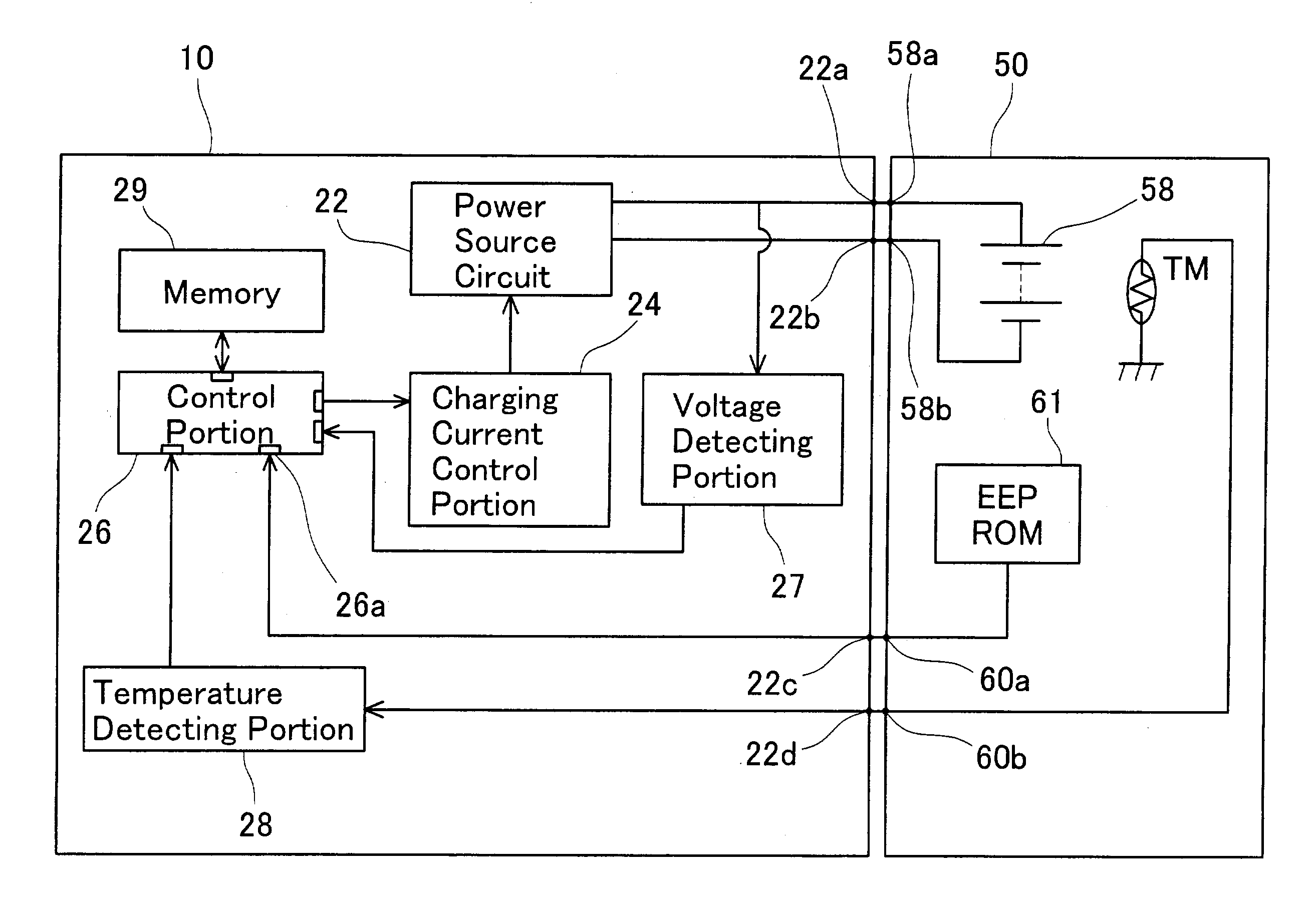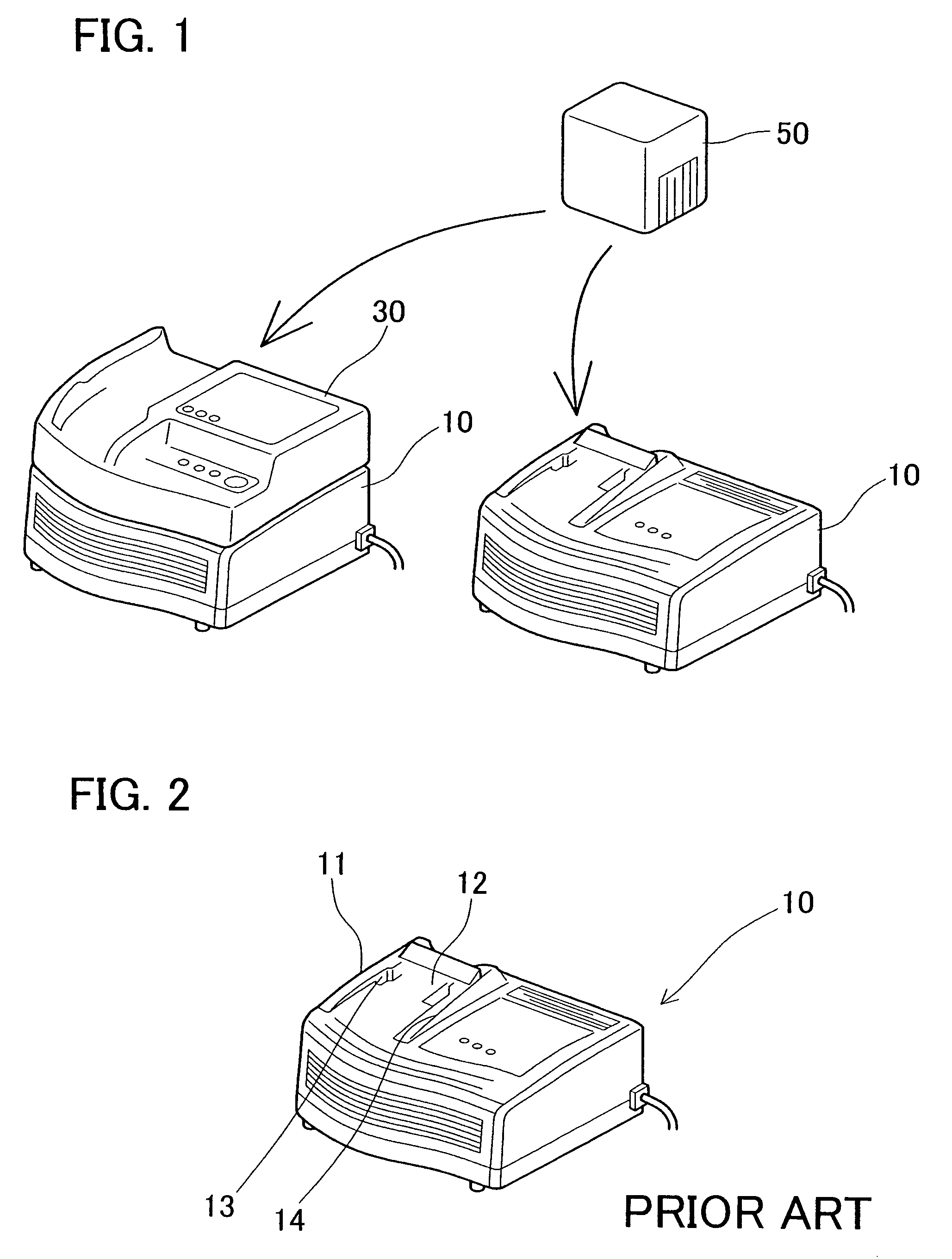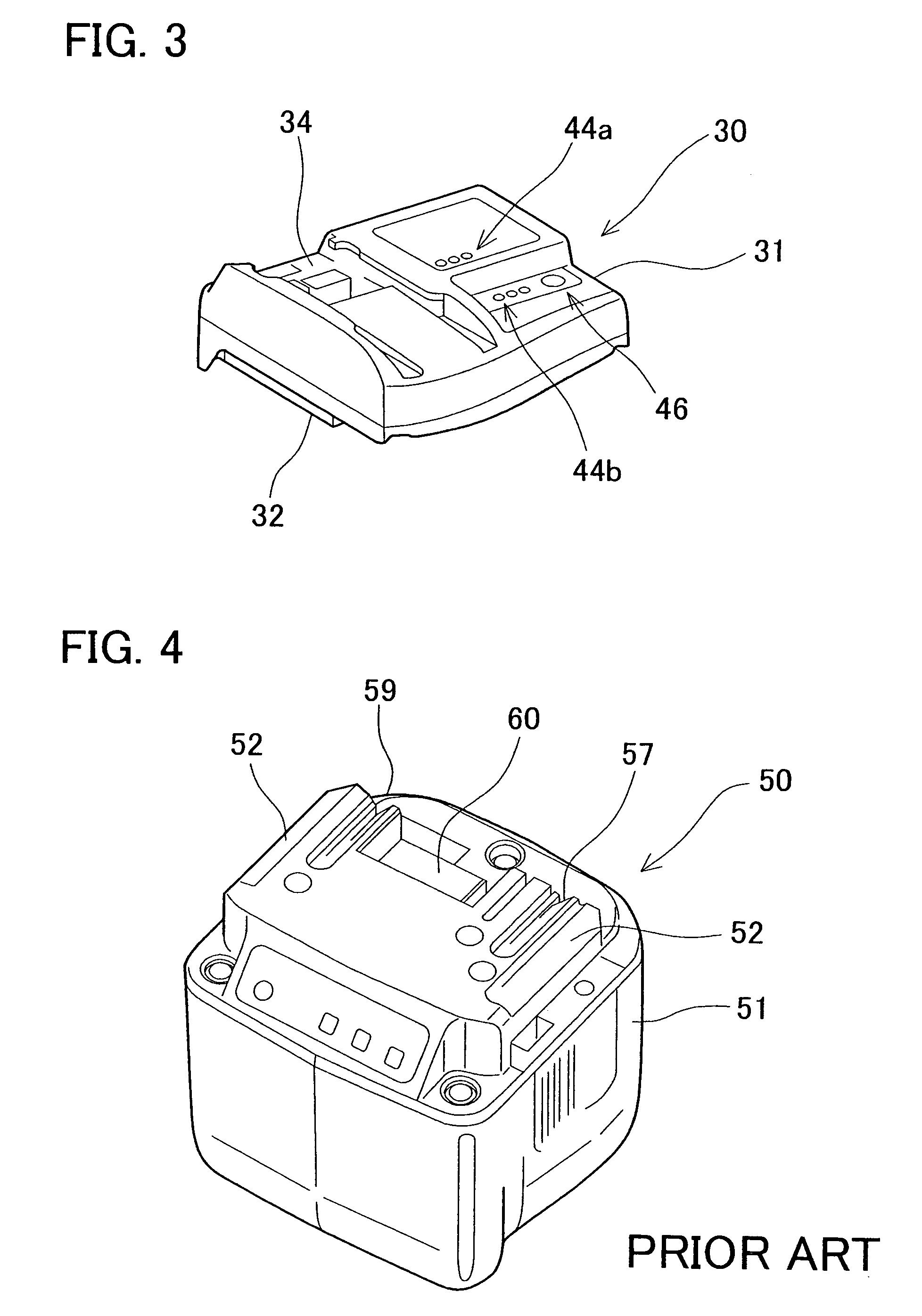Apparatus for refreshing batteries
a rechargeable battery and battery technology, applied in the direction of charging/discharging, secondary cell servicing/maintenance, transportation and packaging, etc., can solve the problem that the discharge circuit provided within the charging device cannot be effectively used, and achieve the effect of reliability eliminating the memory effect of the rechargeable battery
- Summary
- Abstract
- Description
- Claims
- Application Information
AI Technical Summary
Benefits of technology
Problems solved by technology
Method used
Image
Examples
Embodiment Construction
Detailed Representative Embodiment
[0038]FIG. 1 shows a detailed representative embodiment of a battery charger 10, an adapter 30 and a battery pack 50 according to the present teachings. FIG. 2 shows the external appearance of battery charger 10, FIG. 3 shows the external appearance of adapter 30 and FIG. 4 shows the external appearance of battery pack 50. FIG. 5 shows a block diagram that identifies functions of battery charger 10 when it is directly coupled to battery pack 50. FIG. 6 shows a block diagram that identifies functions of battery charger 10 when it is coupled to battery pack via adapter 30.
[0039]As shown in FIG. 1, battery charger 10 can be coupled to either adapter 30 or battery pack 50. When adapter 30 is coupled to battery charger 10 (the state shown on the left in FIG. 1), battery pack 50 can be coupled to battery charger 10 via adapter 30. When adapter 30 is not coupled to battery charger 10 (the state shown on the right in FIG. 4), battery pack 50 can be directly...
PUM
| Property | Measurement | Unit |
|---|---|---|
| charges | aaaaa | aaaaa |
| number of charges | aaaaa | aaaaa |
| power | aaaaa | aaaaa |
Abstract
Description
Claims
Application Information
 Login to View More
Login to View More - R&D
- Intellectual Property
- Life Sciences
- Materials
- Tech Scout
- Unparalleled Data Quality
- Higher Quality Content
- 60% Fewer Hallucinations
Browse by: Latest US Patents, China's latest patents, Technical Efficacy Thesaurus, Application Domain, Technology Topic, Popular Technical Reports.
© 2025 PatSnap. All rights reserved.Legal|Privacy policy|Modern Slavery Act Transparency Statement|Sitemap|About US| Contact US: help@patsnap.com



